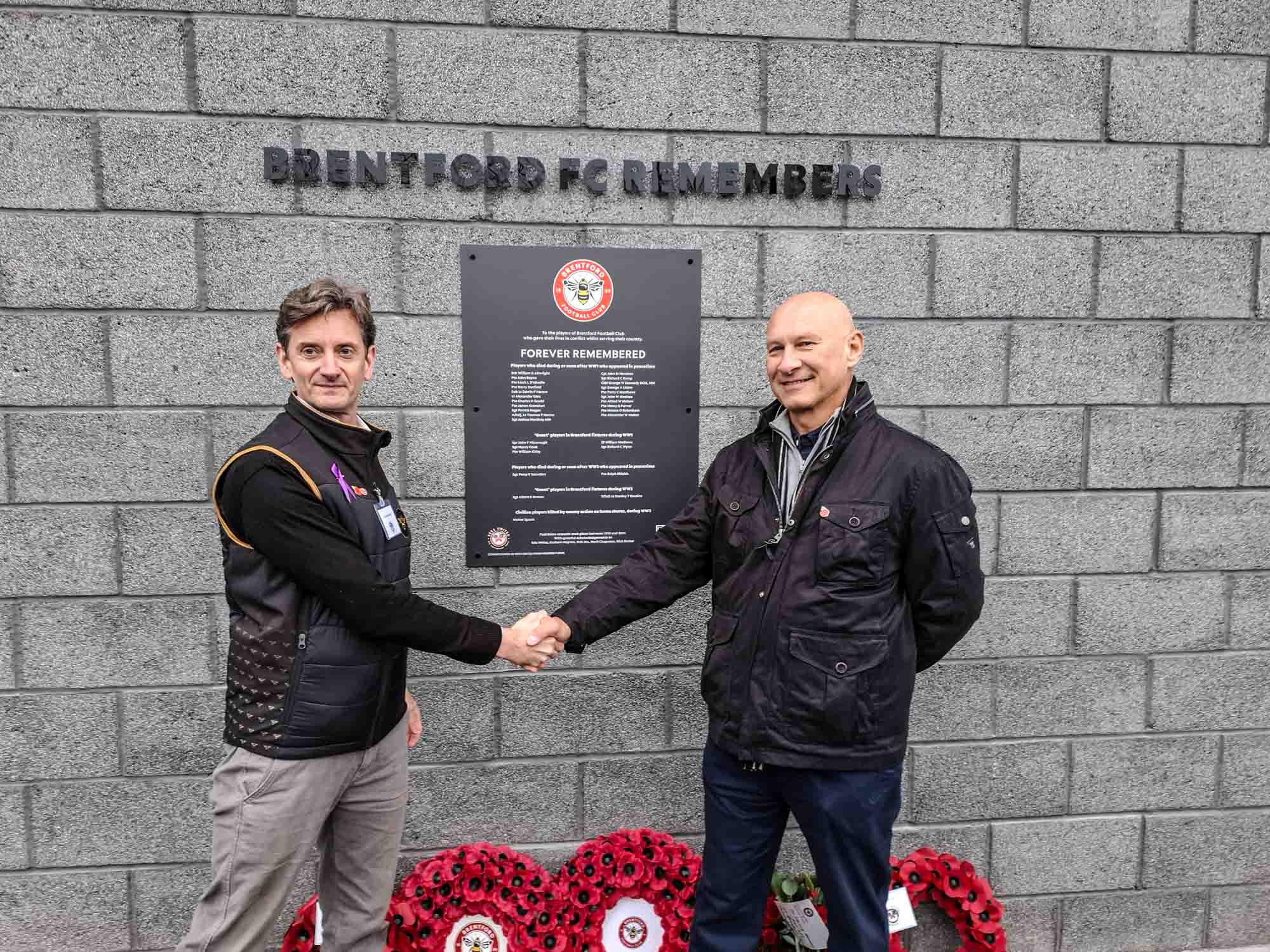The Somme offensive,1 July 1916 to 18 November 1916, was one of the largest and bloodiest battles of the First World War. The opening day of the attack, 1 July, saw the British Army sustain over 55,000 casualties, the bloodiest day in its history. The campaign finally ended after a five-month struggle that failed to secure a breakthrough.
The majority of British troops involved in the Battle of the Somme were inexperienced volunteers of the ‘New Armies’. A number of ‘Pal’s Battalions‘** were involved having been recruited during late 1914 and 1915.
At 7.30am on 1 July 1916, 14 British divisions attacked. In most cases they were unable to keep up with the barrage that was supposed to take them through to the German trenches. This gave the Germans time to exit their dugouts, man the trenches and open fire. Field Marshall, Haig’s infantry were met by a storm of machine-gun, rifle and artillery fire. 55,000 casualties in one day.
On 18 November 1916, the weather deteriorated, Haig shut down the offensive. The Allies had only advanced seven miles and there was still no breakthrough in sight. The British, French and their allies had suffered 620,000 casualties in the process. The German losses were at least 450,000 killed and wounded. 1,000,000 million men were lost or wounded in just four and half months.
Five Brentford players lost their lives in these four and a half months. Their stories are here.
Acting Adjutant, Lieutenant Thomas Pryce Hamer
11th Battalion South Wales Borderers.
Killed in Action on 7 July 1916 at Mametz Wood, Somme France.
Born on 4 May 1883 Newtown Montgomeryshire Wales, to Edward and Martha Hamer (née Matthews). The 1891 Census tells us the family were living at Short Bridge Street, Llanidloes Newtown Montgomeryshire. After schooling, Thomas served an apprenticeship as a Tanner in Aberystwyth. He’d moved back to the family home by 1911.
During his schooling, at Llanidloes County School, Thomas appeared in junior county football matches and then, while at Leeds University, he played football for Kirkstall FC in the Leeds League. In 1906, Thomas travelled to America to further his knowledge in tanning leather. While in Chicago, he appeared for local club Campbell Rovers then, upon his return to Wales, he began to play for Llanidloes Town FC. He was awarded a Welsh Amateur Cap when appearing for Wales in an Amateur International match versus England, at Leeds Road Huddersfield, on 19 February 1910. Unfortunately, Wales suffered a 6-0 defeat. He appeared in several more Wales amateur trial fixtures but was only awarded the one cap.
On 20 November 1912, Brentford played a Southern Alliance match versus Cardiff City in Cardiff. Noted in the team line-ups were; T. Bryce and Hamer. The match ended in a 2-4 defeat to the Bluebirds. Ever since this fixture it was thought that these were two players. In fact, the player was Thomas PRYCE HAMER.
Hamer didn’t appear again for Brentford until a year later, 8 October 1913, again versus Cardiff City at Ninian Park, in a Southern Alliance fixture. Once again the match ended in defeat by one goal to four. This would be Thomas’ last appearance for the Bees.
A report in the Daily News (London), dated 28 January 1914, then mentions that Llanelly FC had three Welsh Internationals in their line-up in a 10-1 victory over Mardy. Including “Pryce Hamer of Brentford”.
Hamer enlisted into the Royal Welsh Fusiliers, as Private 20575, around 28/29 December 1914 in Llandudno Wales. [We can be sure of this date thanks to near numbers of whose records survive]
He attained the rank of Corporal and was embodied into the 14th Battalion RWF. In early 1915, Thomas Hamer was commissioned into Officer Cadet School and trained to become an officer in the British Army. On 1 April 1915 Hamer was appointed as Temporary Second Lieutenant. On 20 April 1915 Hamer was embodied into the South Wales Borderers [SWB], joining the 11th Battalion.
He would later be appointed as Acting Adjutant and be responsible for the transcription of the War Diary of the SWB for the next few months.In the SWB War Diary for July, it noted;
1 July Battalion at Toutencourt marching Acheux. Over the next few days, the battalion route marched to Carnoy.
6 July at Caterpillar Wood. Arriving at 2:30am.
7 July Attacked Mametz Wood at 8:24am with 16th Royal Welsh Fusiliers, attack failed. Battalions reformed and made a second attack at 11am. This attack also failed.
Casualties killed; Lt. Hamer act. Adj.
Lt. Hamer was killed by a bullet to the head from a German sniper. His body was never recovered from the attack on Mametz Wood and was lost to the earth. He is remembered on the memorial to the lost at the Thiepval Memorial, Pier and Face 4A.
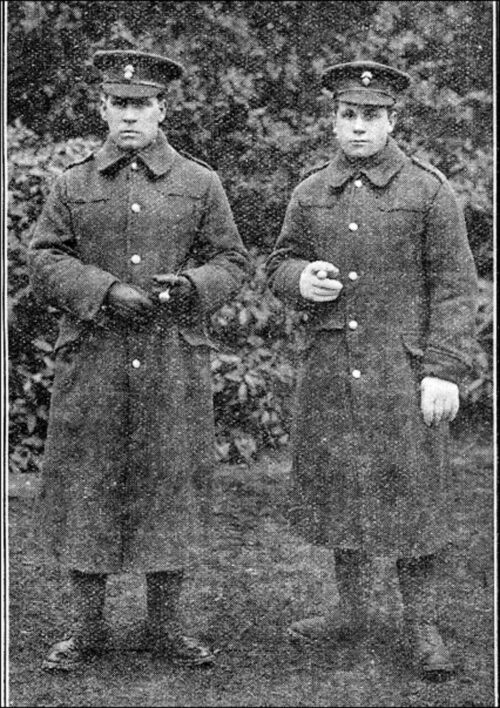
Patsy Hendren (l) John Hendren (r)
Lance Corporal John Michael Hendren #348.
23rd (Service) Battalion (1st Sportsman’s) Royal Fusiliers.
Killed in Action, 27 July 1916 Delville Wood, Somme France.
The younger brother of Brentford legend Patsy Hendren, John was born on 17 January 1893 in Chiswick Middlesex, to Denis and Dinah Hendren (née Cave).
The Census of 1901 records the family address, 5 Jessops Row Turnham Green Middlesex. His father, Denis, was a plasterer, died when John was just four. In the 1911 Census, John, 18, was noted a ‘professional cricketer’ and lived at 91 Rothschild Road Chiswick.
John Hendren, played cricket for Middlesex and Durham 2nd XI’s. There are mentions of Brentford giving a trial to John, in several local papers. He would appeared for Tufnell Park during October 1914 at outside-right. John Hendren enlisted into the 23rd Battalion (1st Sportsman’s) Royal Fusiliers during November 1915. He travelled to France, June 1916.
Once in the Royal Fusiliers, John and Patsy played together in the Sportsman Battalion Football XI’s against fellow regiments and local amateur clubs, including Brentford at Griffin Park.
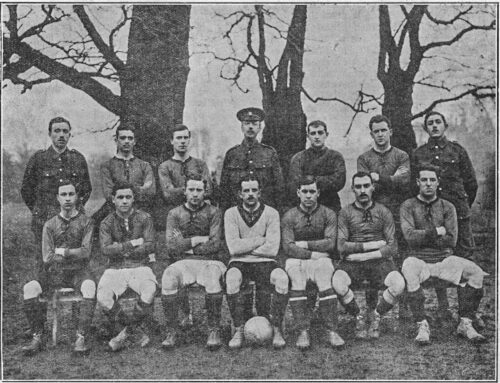 The War Diary (WD) mentions reinforcements of 30 Other Ranks, 10 June 1916. The WD then mentions the movement of the battalion to Bernafay Wood and the preparations for an attack on Delville Wood was planned for 27 July 1916.
The War Diary (WD) mentions reinforcements of 30 Other Ranks, 10 June 1916. The WD then mentions the movement of the battalion to Bernafay Wood and the preparations for an attack on Delville Wood was planned for 27 July 1916.
After the battle, five officers were killed, seven were wounded, 51 other ranks killed and 225 other ranks wounded.
A heavy toll for the battalion and a quarter of the strength were now out of action. Incredibly, the battalion left Delville Wood – after the successful attack – and returned to Bernafay Wood which they had left just 24 hours earlier.
It was in this battle that John Hendren lost his life. Killed in action. His soldier effects record shows that his brothers, Denis and Elias, were his next of kin. John is remembered on the Thiepval Memorial at Thiepval France. On Pier and Face 8C 9A and 16A.
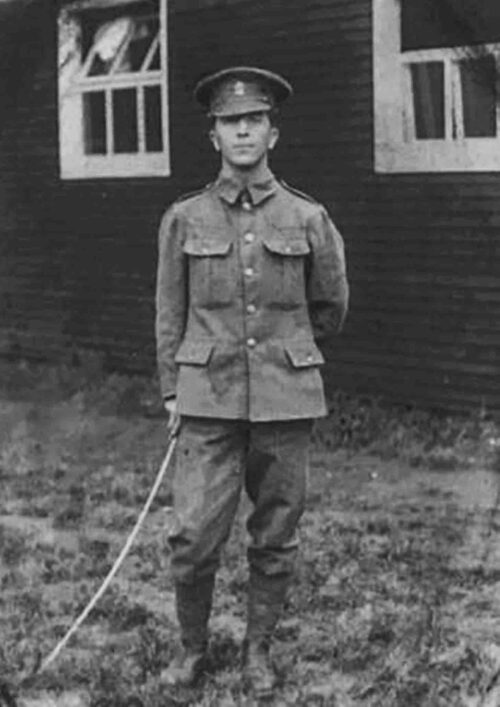
Harry Purver – Brentford FC – 1911-1915
Private Henry George Purver #SP/3728.
24th Battalion (2nd Sportsmen’s) Royal Fusiliers (City of London).
Missing in Action (Killed), 31 July 1916 Delville Wood Somme France.
Henry was born on 4 May 1891 Isleworth Middlesex, to William and Honora Purver (née Mahoney).
The family lived in Isleworth Middlesex at Linkfield Lane and, later, Grainger Road. In the 1911 Census, Henry’s occupation is noted as, ‘reader’. It is believed Henry Purver worked for a local newspaper and proof read copy before it went to print.
His early footballing career, as an amateur centre-forward, began in 1909 at Upton Park FC, who were an amateur football club from East London and members of the London FA. He then played centre forward for Oxford City from season 1910/1911.
It was while he was a first team member at Oxford City that Harry Purver signed amateur forms at Brentford FC to play for the reserve side in the Great Western Suburban League.
The following season, 1911/1912, Harry played in two Southern League matches – his only appearances for the first eleven. He continued to play for Brentford, for the reserve eleven, in the London and South-Eastern Leagues up to 1914/1915.
Harry enlisted at Hounslow, in July 1915, as Private SP/3728 and joined the London Regiment of the 24th Battalion of the Royal Fusiliers (2nd Sportsman’s Battalion). It is noted that he worked, as a reporter, at ‘The Times’. He played in a number of friendly and inter-regiment football matches for his battalion, the 24th (Sportsman’s) Bn. Royal Fusiliers, up to January 1916.
Harry suffered from a gas attack shortly after going to France but returned to the western front after a long period at home. He saw active service from 13 April 1916 until he was killed on 31 July 1916, in Delville Wood, Somme. Private Purver’s body was lost during the fighting of WW and is, therefore, commemorated on the Thiepval Memorial; Pier and Face 8C, 9A and 16A.
The Middlesex Chronicle carried an obituary in their publication on 19 & 26 August 1916. The obituary reported; ‘The game of football has lost an ardent and clever devotee and Isleworth a most popular and charming fellow’.
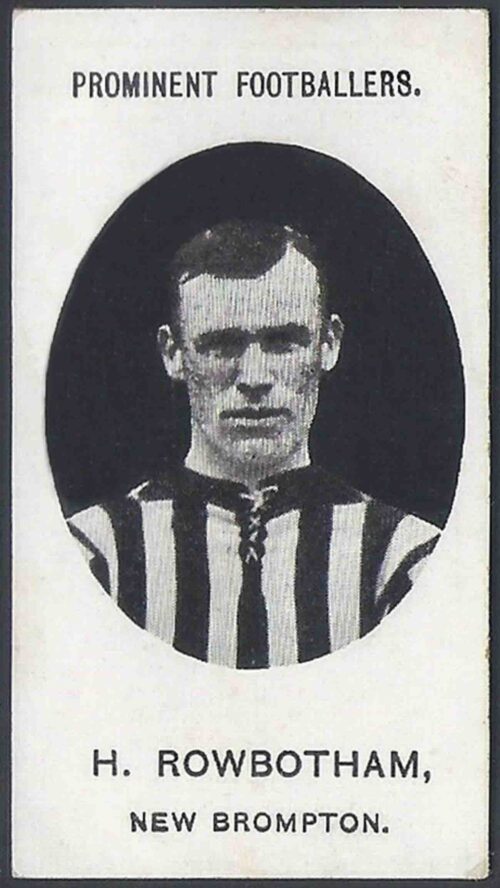 Private Horace Osborne Robotham #F/2397.
Private Horace Osborne Robotham #F/2397.
23rd Battalion (2nd Footballers) Duke of Cambridgeshire’s Own (Middlesex Regiment).
Missing in Action (Killed) on 12 September 1916 during the Battle of Ginchy & Flers-Courcelette Somme France.
Born on 12 June 1879 at Heath Town, Wolverhampton Staffordshire. He was Uriah and Ellen Robotham (née Dale) first child.
The family lived in Wolverhampton for all of Harry’s early life. The 1901 Census of England & Wales shows that Harry Robotham was boarding at 1 Morris View Kirkstall, Headingley Leeds West Yorkshire, home to the Darnbrough family. Harry’s occupation is noted as Bricklayer/Labourer and is single.
Harry married Jessie in 1905 and were living at 34 Junction Street Wolverhampton Staffordshire in April 1911. Harry, now a window cleaner and grocer, with his wife as his assistant in the grocers shop. They had two children, Constance (age 4) and Horace (age 1).
Robotham began his career playing amateur football, as a half-back, for; Wolverhampton Post Office, Redshaw Albion (1899) and Ossett (1899) towards the end of the 19th century. He later became a playing member of Hunslet FC, winning the West Yorkshire League and Cup, before joining Wolverhampton Wanderers in February 1901.
He played six senior games for Wolves before leaving the club to join Fulham in 1903. Establishing himself at Craven Cottage, he was a regular during the 1903/04 season. The following season saw him lose his place in the side and he subsequently moved to Brentford, where he would play 21 games in the Southern League and FA Cup of season 1905/1906. He left West London in 1906 to sign for Glossop.
Then in 1907 he signed for New Brompton (later to be named as Gillingham FC), and would finally finish his playing career after a brief spell at Wellington Town.
On 26 November 1915 at Aldershot, Robotham enlisted into the 23rd (Service) Battalion of the Middlesex Regiment, known as the 2nd Footballers Battalion. He was Private F/2397. Harry, now aged 36 & 120 days, gave his occupation as Professional Footballer and was residing at 31 Field Street Wolverhampton with his wife and family.
After landing in France on 3 May 1916, the 23rd Middlesex Battalion concentrated between Hazebrouck and Bailleul before moving south to take part in the Battle of the Somme. Private Horace Robotham was subsequently killed in action on 12 September 1916 during the subsidiary Battle of Flers-Courcelette. The 37-year-old’s body was never found and his name is now among the many listed on the Memorial to the Missing of the Somme at Thiepval.
His name is carved onto the panel; Pier and Face 12 D and 13 B.
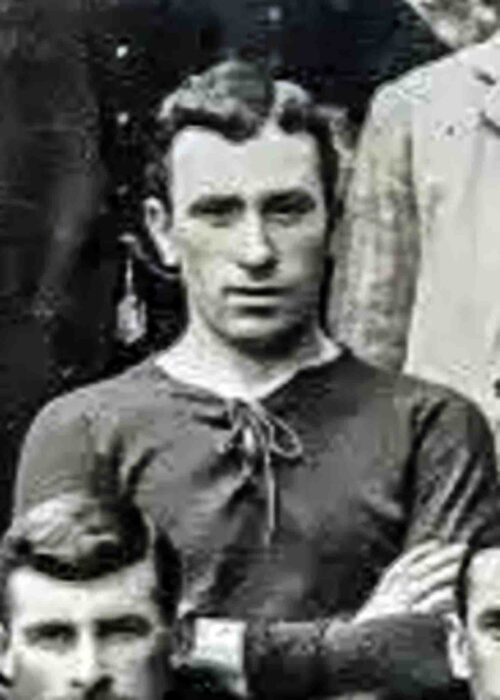
Matthews – Uxbridge FC 1912-1913
Private Percy Charles Matthews 30462.
1st Battalion Essex Regiment.
Missing in Action (Killed) on 12 October 1916 at Gueudecourt, Somme France.
Percy was born on 19 February 1884 at Caddington Luton Bedfordshire, to Henry and Emily Matthews (née Swain). The Matthews family was living on Stanley Street, Luton Bedfordshire in 1891. Percy’s father, Henry, was a brick maker at the local brick works. His mother, Emily, was a Straw Hat Machinist. By the 1901 Census, Percy’s occupation is noted as “stoker” most likely stoking the kilns in the brick factory.
Percy Matthews was a local amateur footballer, who signed for Uxbridge FC, and appeared for Brentford during 1914/1915. Due to the lack of players at Brentford’s disposal, due to WW1, many local amateur footballers appeared for the Bees. Percy had already appeared for Brentford in reserve fixtures the previous season. However, not long after appearing for Brentford, Percy decided to join the colours, after making just three appearances for the Bees.
Percy Matthews joined the Essex Regiment, 1st Battalion, under service number 30462, with the rank of Private. His service number suggests an enlistment date, November 1915 (The Derby Scheme). However, he would have been placed on army reserve until mobilised, probably May 1916.
The Essex Regiment landed in France after serving at Gallipoli and readied themselves for one of the first major offensives in August 1916, the Battle of the Somme.
In October 1916, the 1st Battalion moved to a position to assault Gueudecourt on the Somme. On 12 October 1916, after the main assault, Private Percy Matthews was listed as “missing”. His death was confirmed sometime later but his body was never found on the battlefield.
He’s remembered on the Thiepval Memorial to the missing. Pier and Face 10 D.
For many, the battles of The Somme exemplified the ‘futile’ slaughter and military incompetence of the First World War. However, a more effective army emerged from the battle. The tactics developed there, including the use of tanks and creeping barrages, laid some of the foundations of the Allies’ successes in 1918. The Somme also succeeded in relieving the pressure on the French at Verdun. Abandoning them would have greatly tested the unity of the Entente.
The large losses, especially among the ‘Pal’s Battalions‘**, on the Somme plunged many British communities into grief. The battle, and especially its first day, have become a popular symbol for the ‘futility’ of war.
**
The Pal’s Battalions were specially constituted battalions of the British Army comprising men who enlisted together in local recruiting drives, with the promise that they would be able to serve alongside their friends, neighbours and colleagues, rather than being allocated to battalions away from their mates.
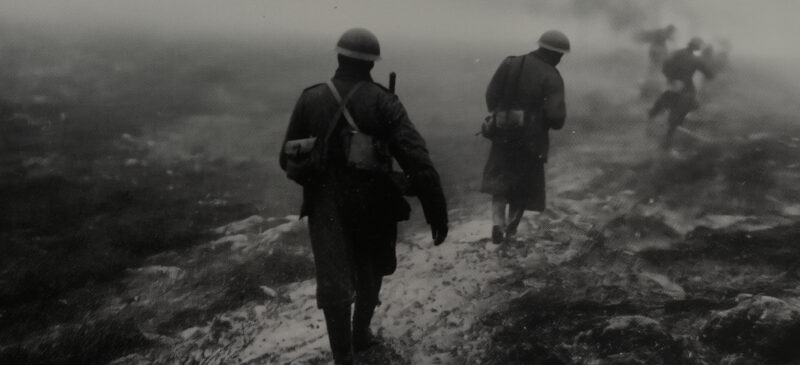
WE WILL REMEMBER THEM
‘When You Go Home,
Tell Them of Us And Say,
For Your Tomorrow, We Gave Our Today.’

